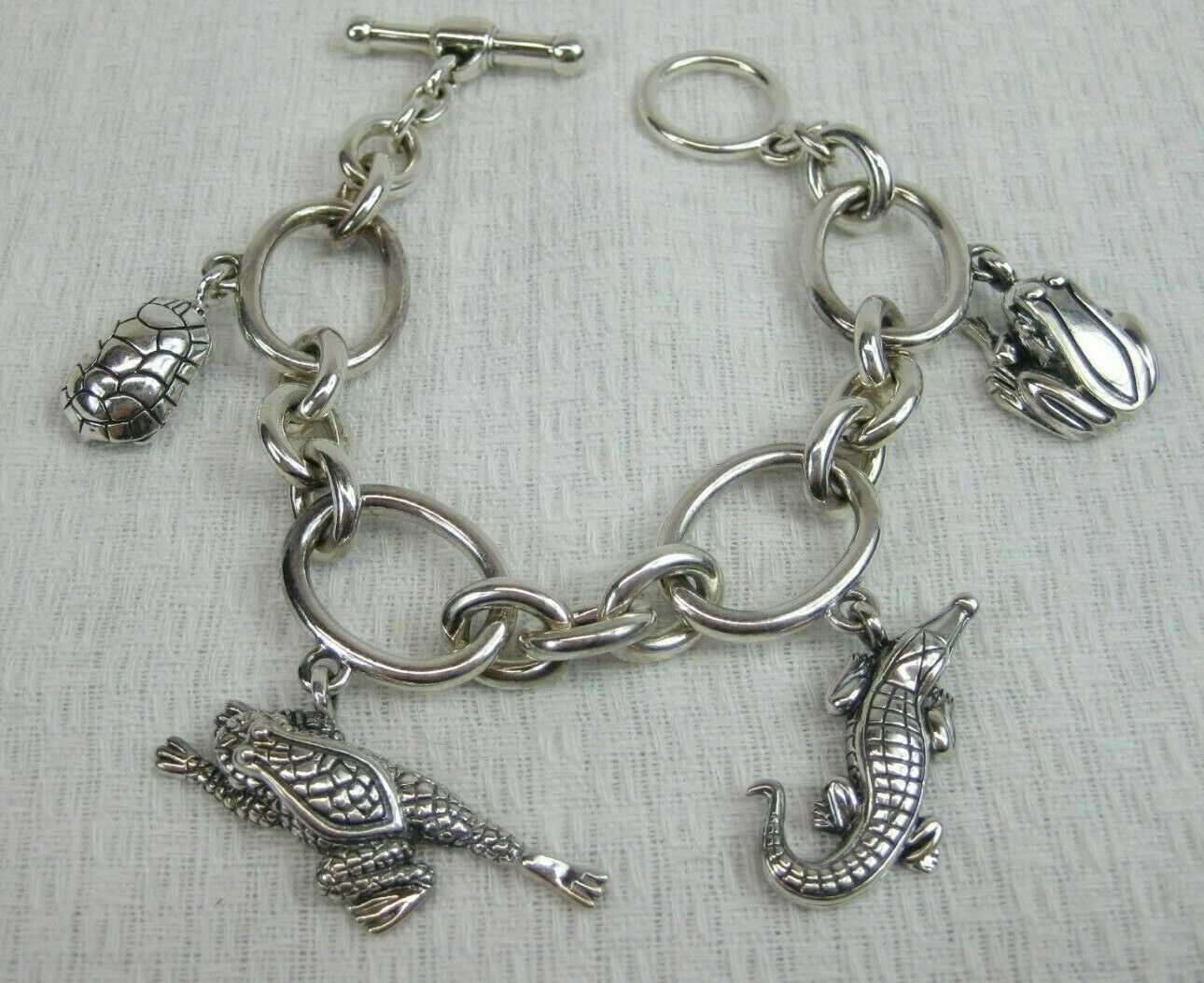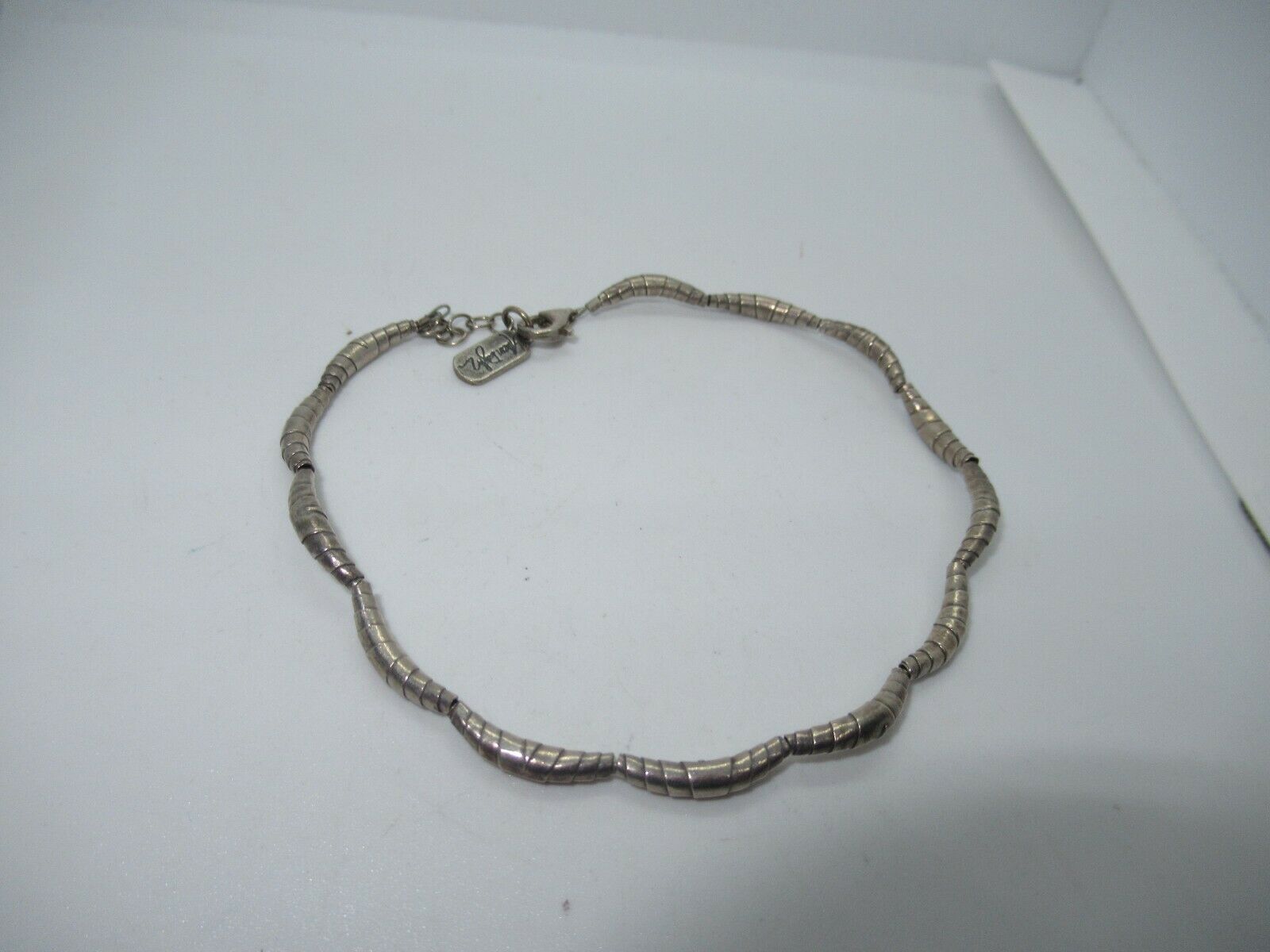-40%
VNTG 925 Sterling Silver Henry STEIG New York Modernist Studio Cuff RARE 1950s
$ 340.56
- Description
- Size Guide
Description
Rare and highly sought after!Sterling Silver Mid Century Modernist Henry Steig Studio Cuff Bracelet 1950s
Measurements: 2.75" x 2"
Marks: Steig Sterling
Weight: 24g
I LOVE Offers! No REASONABLE offer will be refused! :0)
All items are shipped same business day if purchased before 2pm EST. After 2pm EST, items will be shipped next business day. Everything we sell will be wrapped securely with tracking and insurance always included
About Henry Steig:
Everyone knows the famous picture from the film The Seven Year Itch, of Marilyn Monroe standing on a New York sidewalk, her skirt blown up by on updraft from the subway grate below. However, not everyone knows that at that moment she was standing in front of Henry Steig's jewelry shop at 590 Lexington Avenue. NYC, NY
After graduating from high school, Henry Steig went to City College (CCNY). After three years he left to study painting and sculpture at the National Academy of Design. He was also an accomplished musician, playing saxophone, violin and classical guitar, and while he was in college, he began working as a jazz musician. From about 1922, when only sixteen years old, until 1932 he played reed instruments with local dance bands.
After four years at the National Academy, Steig worked as a commercial artist and cartoonist. He signed his cartoons "Henry Anton" because his brother William was working as a cartoonist at the same time, for many of the same magazines. From about 1932 to 1936, Henry Anton cartoons appeared in Life, Judge, New Yorker and other magazines.
By the late 1940s there were several talented craftsmen who had already established shops in Greenwich Village. Among them were the studio jewelers Sam Kramer and Paul Lobel. Like Paul Lobel, Henry Steig come to jewelry making as a mature and accomplished artist. Throughout his life, in addition to designing and making jewelry, Steig continued to point and take photographs and to exhibit his work in galleries.
During the fifties, Steig worked primarily in handwrought sterling silver, although he did offer his designs in 14K gold. There is no typical Steig piece. He made jewelry constructed of flat forms combining geometric and biomorphic shapes. He also made pieces of twisted wire. His jewelry was mostly abstract, but sometimes his pieces were representational, drawing on plant or animal forms for inspiration.
A catalog from the late fifties illustrates dozens of his designs. For example, there is a brooch and earring set mode of sleek boomerang shapes. There are several bracelets that show his talent for combining ordered geometric forms with more improvisational organic shapes. All of his pieces are very sculptural. His sophisticated use of negative and positive space, his preference for the asymmetrical, and his ability to create tantalizing visual surprises demonstrate his highly developed sculptural sensibilities.
"Each piece of Henry's jewelry was a miniature sculpture," says Mischa Richter. "He was very jealous about his designs."
In Steig's twisted wire pieces, the wire has been hammered so that its surface modulates from round to flat. It was then shaped into complex curvilinear forms. In most of these pieces it is hard to visually follow the path of the wire from its beginning to its end. Reminiscent of the jewelry of Alexander Calder in the use of twisted and flattened wire, these pieces differ from Calder's in that they are more labyrinthine and lyrical. One piece in particular is a large bracelet of rhythmically looped wire that is light, unexpectedly flexible and remarkably comfortable to wear.
The jewelry of Henry Steig is elegant, visually light and flattering to the wearer. He took pains to make sure that the jewelry fit comfortably and was never overpowering. His sense of design was strong, but not formalistic and rigid. He knew that an overly designed piece of jewelry is boring and predictable. There is a sense of freedom, improvisation and surprise in his work but no piece was ever haphazard or sloppy.
Many people in the arts came to Henry Steig's shops. Michael Steig remembers that Ella Fitzgerald and Elizabeth Taylor were among the celebrities who purchased Steig jewelry. He also remembers seeing Edward G. Robinson in the Provincetown shop.
In 1963, Steig closed his shop on Lexington Avenue. He and his wife moved permanently to Provincetown. He ran the shop at 200 Commercial Skeet for nine more years.
Henry Steig sold the use of his Provincetown shop and his designs to Chicago jeweler Jon Dee in 1972.
On February 2, 1973, he died of spinal cancer in Hyannis, Massachusetts.
Information above courtesy of: Catherine Siracusa and Sidney Levitt
Metalsmith Magazine - 1992 Spring Print




















